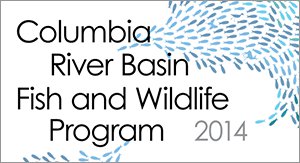Mixed Review
Fish and Wildlife Program: Independent scientists like dam passage research, protected areas, and strongholds, but say more goals need objectives, and monitoring and adaptive management should improve
- March 28, 2018
- John Harrison

A panel of independent scientists says the Northwest Power and Conservation Council’s Columbia River Basin Fish and Wildlife Program has “many strengths” and that most sections “… provide sound scientific guidance for actions to mitigate for hydrosystem impacts and move toward recovery of fish and wildlife resources in the Columbia River Basin.” The Program directs more than $250 million annually ($254.7 million in Fiscal Year 2017) to mitigate the impacts of hydropower dams on fish and wildlife in the basin.
The review, by the 11-member Independent Scientific Advisory Board (ISAB), is intended to inform the Council as it prepares to review and revise the Program, which last was revised in 2014. In September 2017, the Council asked the ISAB to evaluate the scientific merits of the 2014 Program in preparation for the next Program revision, which is likely to begin in May when the Council plans to formally call for recommendations to amend the Program. Under the Northwest Power Act of 1980, the federal law that authorized the four Northwest states to form the Council, the Council created the original Program, in 1982, and revises it every five years based primarily on the recommendations of the region’s fish and wildlife agencies and Indian tribes, but anyone may submit recommendations for amendments to the Program. The period for submitting recommendations likely will last three or perhaps four months. By law, once the recommendation period closes, the Council has a year to complete the amendment.
In its review of the Program, the ISAB cited a number of strengths, including mainstem hydrosystem passage research (“most of this work is very thorough and well done”); protected areas, which protect some 44,000 miles of rivers and streams from hydropower development; the stronghold habitat strategy, which protects native, wild, and natural-origin fish; the strategy for anadromous fish mitigation in blocked areas (“... the first steps toward reestablishing salmon and steelhead in one-third of their original habitat”); and life cycle modeling of specific fish populations (“…key to evaluating many proposed changes in the system”).
The ISAB also noted several weaknesses in the Program, including that the majority of Program goals need corresponding objectives; key Program strategies lack monitoring or evaluation plans or funding; and the Program provides limited guidance on the use of adaptive management. The ISAB also noted that while the Program supports cost-effective actions, the Council has not undertaken a cost-effectiveness analysis “to rank and prioritize projects ... [to] choose actions that have the greatest expected benefit per dollar and the highest likelihood for generating those benefits in the shortest period.”
The report says there are “approaches available to improve strengths and address weaknesses,” and added “the ISAB recognizes that the Program is a living document, one that is evolving to incorporate new information and to meet ever changing conditions in the Basin.”



